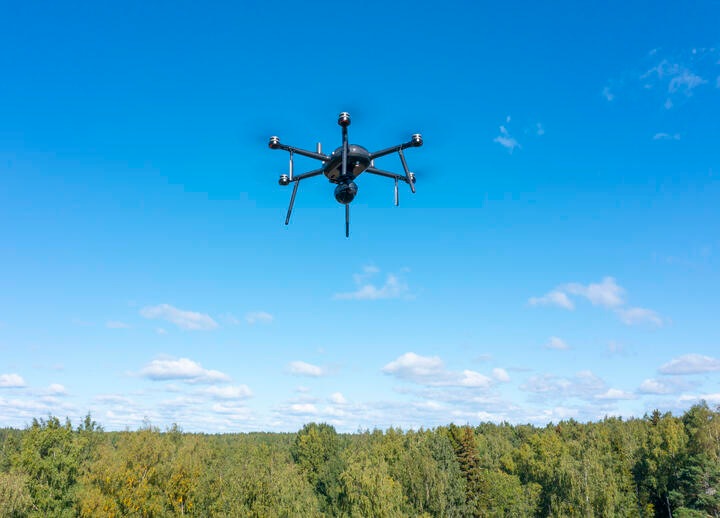Claudia Bacco explains how new AI-enhanced drone management systems are helping first responders save lives
Nokia and Motorola Solutions have announced a joint drone technology integration for public safety and mission-critical industries. The solution is an AI-enhanced, automated drone-in-a-box leveraging Nokia Drone Networks and Motorola Solutions’ CAPE drone software and ground control station.
Drones can be remotely dispatched by public safety organisations to address emergency situations. Real-time AI-powered intelligence helps to inform decision makers to determine the next steps to take when time is critical. The CAPE software includes features to adjust a drone’s flight path to avoid obstacles, work within a geo-fenced area if desired, and adjust to changing terrain. Nokia’s drone-in-a-box relies on the 4G/LTE or 5G networks in support of BVLOS flight. In addition to simplifying the operationalisation of flying the drones, the AI works in the backend to support predictive maintenance to keep the drones flying with less downtime.
The first pilot in the US of the Drones as First Responders (DFR) solution is a public safety organisation, although it could support other mission-critical industries such as mining. The respective organisations are responsible for managing and flying the drones and are provided training through Nokia, Motorola Solutions or their partners, in order to be prepared when they go live. In the public safety scenario, the need is 95% surveillance (video) and thermal imaging. The solution is commercially available today.

Thomas Eder
“As of today, the deployments in US are not (yet) operating in BVLOS, as most of the DFR operations in the US, but they are expected to transition towards BVLOS within the next weeks, subject to approval by the competent authorities. Thanks to our very strict adherence to regulatory approvals, we really take this topic seriouslyl But we are also not concerned about the approvals, given our great success with Citymesh in Belgium which is executing nationwide BVLOS operations with our system every day,” said said Thomas Eder, Head of Embedded Wireless Solutions, Nokia.
One thing that is so interesting about this solution, is the role that the telecommunications network plays in supporting BVLOS. The drone carries four SIM cards, can support 4G/LTE and 5G, and connect to two different networks for redundancy to allow the drones to adjust their flight path in an automated fashion. This roadmap will help to migrate from automation to autonomy in time.

Another interesting component of the use of 5G is to support critical requirements from drones based on their mission – is there heavy video content that must be live streamed, is their data collection that can be offloaded at a later time, what bandwidth is required, the drone can decide – 4G/LTE or 5G.
Partnership is key to support these future visions through open APIs allowing the integration to both IT and OT networks in wider ranging industrial applications. This is the core of what 5G was developed for. Edge Computing also plays a role to dynamically allocate where a drone processes the data following collection. The drones and the network are in constant communication.
“We understand how telecommunications networks work, as this is our DNA. This allows us to determine the best way to optimise these networks to support different applications required by drone operators,” said Thomas Eder, Head of Embedded Wireless Solutions, Nokia.




